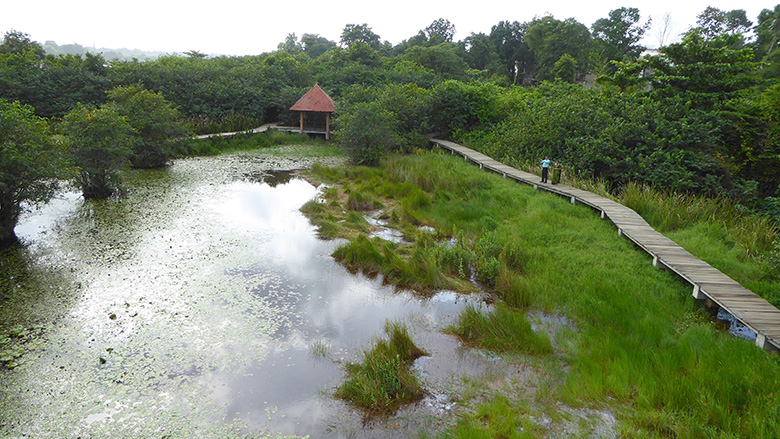- Beddagana Wetlands Park: The Beddagana urban wetland, which is part of the flood plans of the Diyawanna Lake, is part of a larger Wildlife Sanctuary declared by the Department of Wildlife Conservation in 1985. Only 18ha in area, it is a small area, but very important for its demonstration value of urban wetlands. The Beddagana Wetlands Park provides a recreation facility that helps with flood control, provides a refuge for flora and fauna and moderates the temperature of the immediate surrounds. The Park also provides a facility that educates the public about the city’s natural resources as well as providing much-needed open space and walking paths.
- Cost and Financing (Rupees 181million). This was fully funded under the IBRD loan as a part of MCUDP’s Component 1, related to flood and drainage management. MCUDP is the first bank-supported urban project in Metro Colombo. Complementing the project’s hard infrastructure (e.g. tunnels, canal construction and rehabilitation, pumping stations), these “soft” infrastructure works will do much for both flood protection and quality of life within the city.
- Economic Benefit to Wetlands: Colombo’s natural wetlands provide effective protection from floods. According to the Bank’s analytical work on economic benefits of wetlands, if Colombo was to lose all its wetlands, the Colombo Metropolitan Region would be at a risk of losing 1% of its GDP on average each year due to flood damage – similar to damages suffered in the massive floods of November 2010.
- Complementarity with the PHRD supported Wetland Management Strategy. Beddagana Park works complements well with the recently concluded Wetland Management Strategy supported by the PHRD grant program. The Wetland Management Strategy, which is now in the process of formal adoption by Cabinet, advocates the importance of wetland conservation and also recommends a ‘smart use’ of existing wetlands. The design and construction of the park facilities also adopted best practices in order to minimize stress and impacts on the wetlands while maintaining natural assets and identity.
- Importance within the Metro Colombo Region: Beyond serving as essential pieces to flood mitigation and protection, the wetlands make the city more livable by regulating extreme air temperatures. It is estimated that more than 50% of Colombo benefits by the evaporative air cooling provided by the wetlands. They also protect the health of the citizens by buffering the negative effects of air-borne pollutants and by providing the much-needed recreational space. The site is abundant with bird species like Cormorants, Purple Coots, Babblers, Kingfishers and House Crows.
- Operations and Maintenance: The Urban Development Authority has developed a Management Plan and will be responsible for the operations and maintenance of the Park in the short run. Further review and decision on the park’s management model will be crucial to ensure long-term sustainability of the park.
